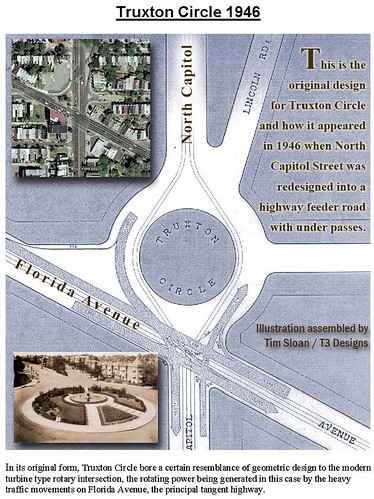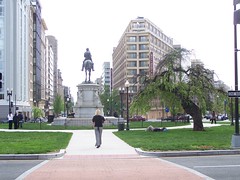What a "Complete Places" land use and transportation planning philosophy would mean in practice
Is exemplified in the post, "the case for bringing back truxton circle" from the Bloomingdale (for now) blog. Truxton Circle is no longer extant. It was the circle at North Capitol and Florida Avenue. There are Main Street revitalization efforts in that area. They are doomed to fail as long as the neighborhood is an automobile sewer.
The entry describes Tim Sloan's efforts to put bringing Truxton Circle back on the planning agenda.

Diagram by Tim Sloan.
Note that a few years ago, DC's Department of Transportation did bring Thomas Circle back to its more original size. And over the years, other circles that had been cut by roads such as Logan Circle, have been repaired as well.

A rebuilt Thomas Circle begins to show some signs of life, April 2008.

The rendering.
This aerial photo from DestinationDC shows what Thomas Circle looked like before, after having been carved up to maximize roadways.
Frankly I think that the inner ring of Dupont Circle could be removed and restored as park also...
A "complete places" approach to city land use and transportation planning would mean that we would work to make places better for living and working the priority rather than making moving vehicles in and out quickly the most important priority.
If Thomas Circle can be restored, why not Truxton Circle?
(This will be the example I use to explain this philosophy in the forthcoming 2009 Transportation Wish list document.)
Labels: sustainable land use and resource planning, transportation planning, urban design/placemaking



0 Comments:
Post a Comment
<< Home